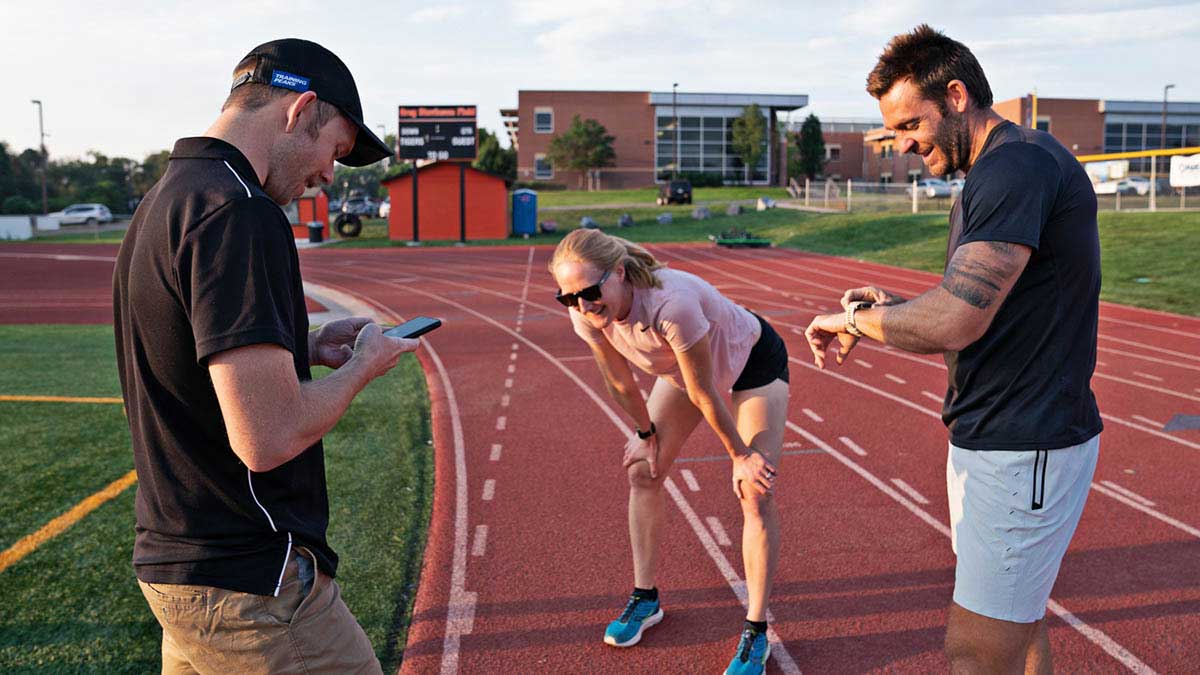In sports, talent may get athletes to the starting line, but preparation determines whether they cross the finish line victorious. Elite athletes don’t leave performance to chance—they follow meticulously crafted training regimens designed to maximize strength, endurance, skill, and mental resilience. These routines, often invisible to the public eye, are a blend of science, discipline, …
Training Secrets: How Elite Athletes Prepare for Competition

In sports, talent may get athletes to the starting line, but preparation determines whether they cross the finish line victorious. Elite athletes don’t leave performance to chance—they follow meticulously crafted training regimens designed to maximize strength, endurance, skill, and mental resilience. These routines, often invisible to the public eye, are a blend of science, discipline, and innovation.
Understanding how top-tier athletes prepare offers insights not just into peak performance, but also into the mindset and dedication required to excel at the highest level.
1. Building the Physical Foundation
Elite training begins with the basics: strength, endurance, and agility. Athletes design programs that balance these elements to meet the specific demands of their sport.
- Strength Training: Customized resistance workouts target muscle groups essential for explosive power, stability, or sport-specific movements. Olympic sprinters, for example, focus on lower body strength to enhance acceleration, while swimmers combine upper body and core exercises for powerful strokes.
- Endurance Work: Cardiovascular conditioning ensures athletes can maintain high performance over the duration of competition. Long-distance runners, cyclists, and rowers often use interval training to boost stamina while preventing burnout.
- Agility and Flexibility: Quick directional changes, balance, and range of motion are crucial across sports. Agility drills, plyometrics, and dynamic stretching routines improve coordination and reduce injury risk.
This physical foundation is tailored, precise, and constantly evolving, reflecting the principle that elite performance is never static.
2. Skill Development: Precision Under Pressure
Physical fitness alone is not enough. Elite athletes spend countless hours honing the technical skills that distinguish good performance from greatness.
- Repetition and Muscle Memory: Consistent practice reinforces correct form, making complex movements automatic under pressure. Basketball players rehearse free throws, tennis players perfect serves, and footballers refine passing accuracy to achieve precision when stakes are high.
- Simulation of Competition: Athletes recreate game-like scenarios during practice, incorporating opponents, crowd noise, and time constraints to simulate real conditions. This mental and physical rehearsal prepares them for the unpredictability of competition.
- Continuous Feedback: Video analysis, wearable sensors, and coach evaluations identify subtle flaws, allowing athletes to refine their techniques systematically.
Skill mastery is about combining repetition, awareness, and feedback to achieve flawless execution when it matters most.
3. Mental Conditioning: The Psychological Edge
Elite athletes recognize that success is as much mental as it is physical. Mental preparation strategies enhance focus, confidence, and resilience:
- Visualization: Athletes mentally rehearse key moments, imagining successful execution to build familiarity and reduce anxiety.
- Mindfulness and Meditation: Techniques to stay present, manage stress, and recover from setbacks are widely adopted in sports ranging from tennis to gymnastics.
- Goal Setting: Breaking down long-term objectives into achievable milestones maintains motivation and provides a clear roadmap for progress.
Mental conditioning ensures athletes remain calm under pressure, adaptable in competition, and focused on outcomes, often turning psychological preparedness into tangible advantages.
4. Recovery and Regeneration
Elite training emphasizes recovery as much as exertion. Athletes use a combination of nutrition, sleep, and therapeutic interventions to maintain peak performance:
- Nutrition: Customized meal plans optimize energy levels, muscle repair, and overall health. Carbohydrate timing, protein intake, and micronutrient balance are carefully managed.
- Sleep: Adequate rest is critical for cognitive function, muscle recovery, and injury prevention. Many athletes prioritize quality sleep as much as workouts.
- Therapeutic Techniques: Massage, cryotherapy, hydrotherapy, and physiotherapy help reduce inflammation, accelerate recovery, and prevent overuse injuries.
Recovery is an essential element of preparation, allowing athletes to train harder, adapt faster, and perform consistently.
5. Technology and Analytics in Training
Modern athletes harness technology to maximize efficiency and track progress:
- Wearable Devices: Track heart rate, oxygen consumption, and movement patterns for precise performance insights.
- Motion Capture and Video Analysis: Identify biomechanical inefficiencies and optimize techniques.
- Data-Driven Training Plans: Analytics inform workload, intensity, and progression, ensuring athletes peak at the right time for competition.
The integration of technology reflects a scientific approach to human performance, transforming training from guesswork into measurable, actionable progress.
6. The Role of Coaching and Support Staff
Behind every elite athlete is a team of experts guiding every aspect of preparation:
- Coaches: Design training programs, provide tactical insights, and monitor performance.
- Nutritionists and Dietitians: Customize meal plans to fuel training and recovery.
- Sports Psychologists: Enhance mental resilience and focus under pressure.
- Physiotherapists and Trainers: Ensure physical readiness, manage injuries, and optimize conditioning.
This collaborative approach ensures that every factor influencing performance is addressed, leaving no detail to chance.
7. Adapting to Competition
Preparation is not static; elite athletes adjust strategies based on opponents, conditions, and context:
- Scouting and Analysis: Studying competitors’ tendencies allows athletes to anticipate moves and exploit weaknesses.
- Environmental Adaptation: Adjusting to altitude, weather, and venue conditions can provide a decisive edge.
- Flexibility in Training: Incorporating new drills, techniques, and recovery strategies ensures adaptability in dynamic competitive environments.
The ability to adapt and evolve is what separates good athletes from champions who consistently excel.
8. Lessons for Aspiring Athletes and Enthusiasts
While the training regimens of elite athletes may seem extreme, key takeaways are universally applicable:
- Consistency matters: Incremental progress accumulates over time.
- Mind and body are linked: Physical training without mental preparation is incomplete.
- Recovery is part of training: Rest, nutrition, and self-care are as important as workouts.
- Data can guide improvement: Tracking performance helps identify weaknesses and refine techniques.
These principles can guide anyone striving for excellence, whether in sports, fitness, or other high-performance endeavors.
Conclusion: The Blueprint of Champions
Elite athletes succeed because they train smarter, not just harder. Their preparation is a delicate balance of physical conditioning, technical skill, mental fortitude, recovery, and data-driven strategies. Behind every record-breaking performance and championship victory lies a meticulous plan executed over months and years, often invisible to the public eye.
Understanding these training secrets offers a window into the discipline, dedication, and innovation required to compete at the highest level. For fans and aspiring athletes alike, it is a reminder that excellence is built, not inherited, and that victory is the reward of preparation, perseverance, and precision.
In sports, preparation is everything, and for elite athletes, every rep, every meal, every meditation session, and every strategy session is a step toward turning potential into greatness.




